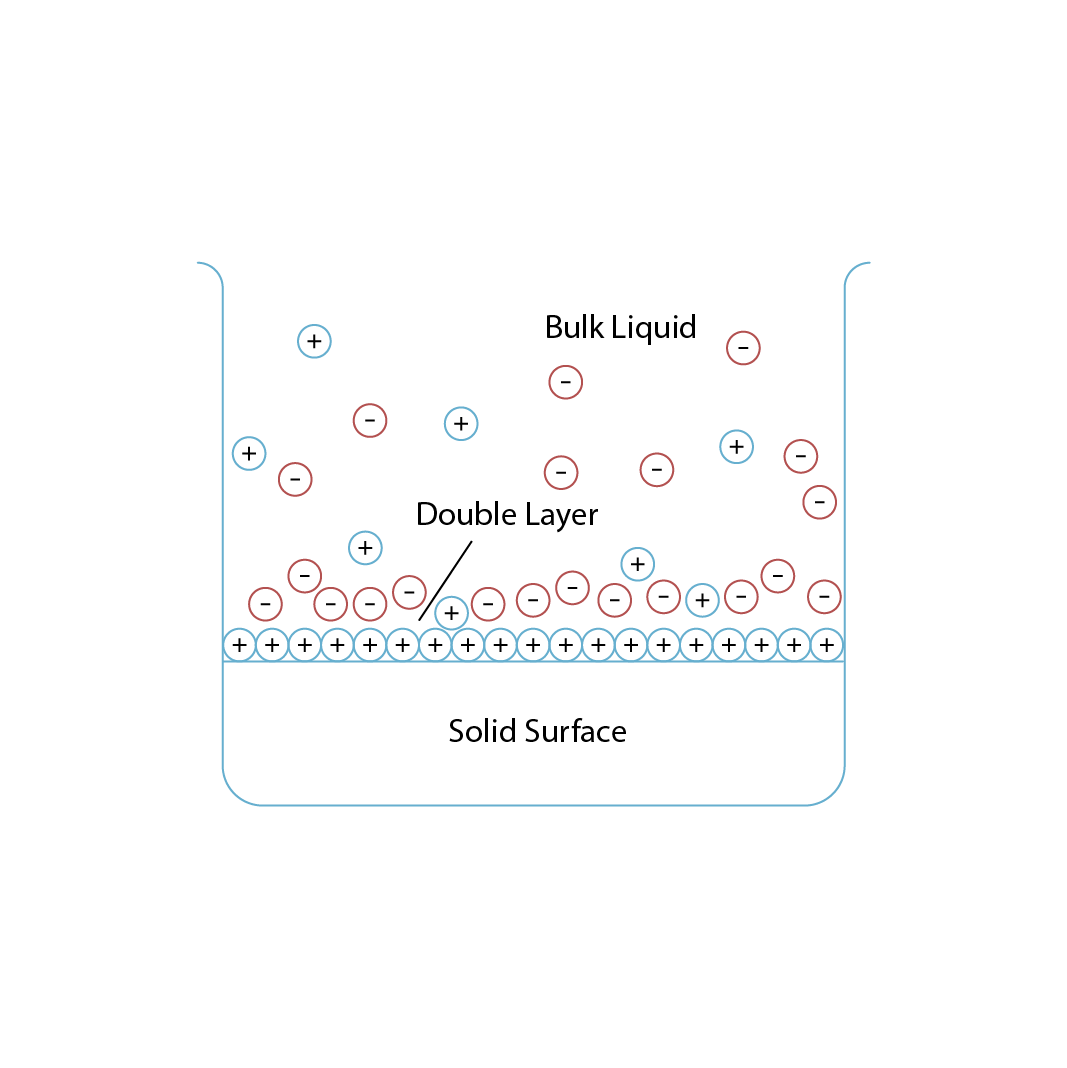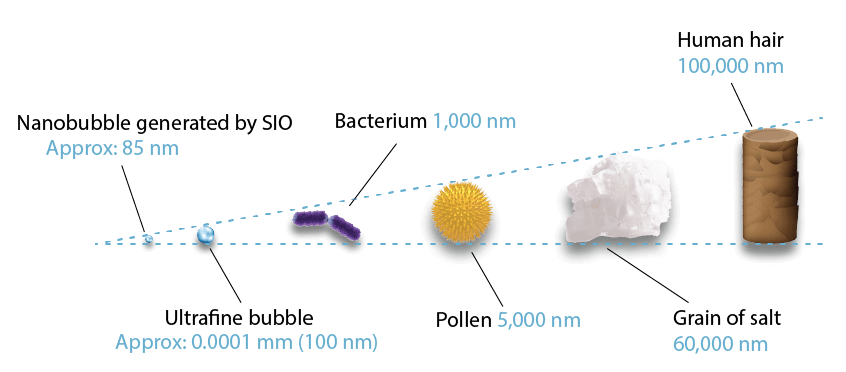
The SIO patented bulk Nanobubble generation method consistently produces high density solutions of optimally sized nanobubbles averaging 85 nm in diameter based on independent laboratory testing using Malvern’s NanoSight Nanoparticle Tracking Analysis software. Nanobubbles of this size are stable in liquid because they have reached equilibrium with bubble surface tension, internal pressure, surrounding liquid pressure, surface charge, and their environment.
In partnership with the Fluid Engineering Laboratory of Tokyo Metropolitan University The results of research and experiments are reflected in product manufacturing.
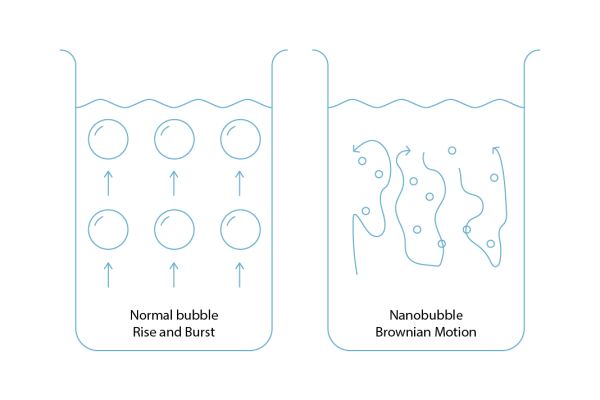
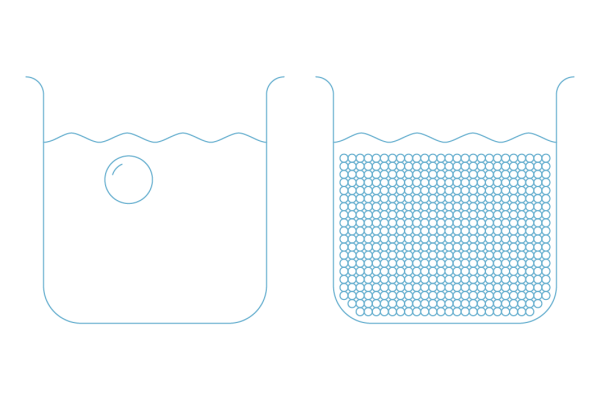
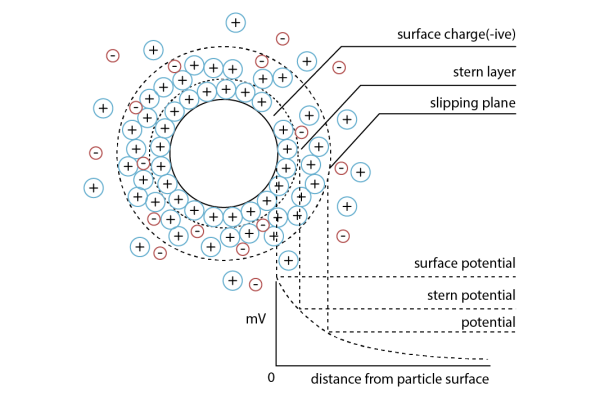
The zeta potential is measured in mV and it measures the magnitude of the attraction between particles and bubbles or electrostatic repulsion. It is a useful indicator for understanding the state of the nanoparticle surface charge and in predicting the long-term stability of dispersions.
A high zeta potential signifies stability to nanobubbles in a suspension due to repulsion among the bubbles. Conversely, a lower zeta potential leads to coagulation and is less stable.
Nanobubbles have a high negative surface charge that keeps them stable in liquid and enables them to continuously participate in and stimulate physical, biological, and chemical interactions.
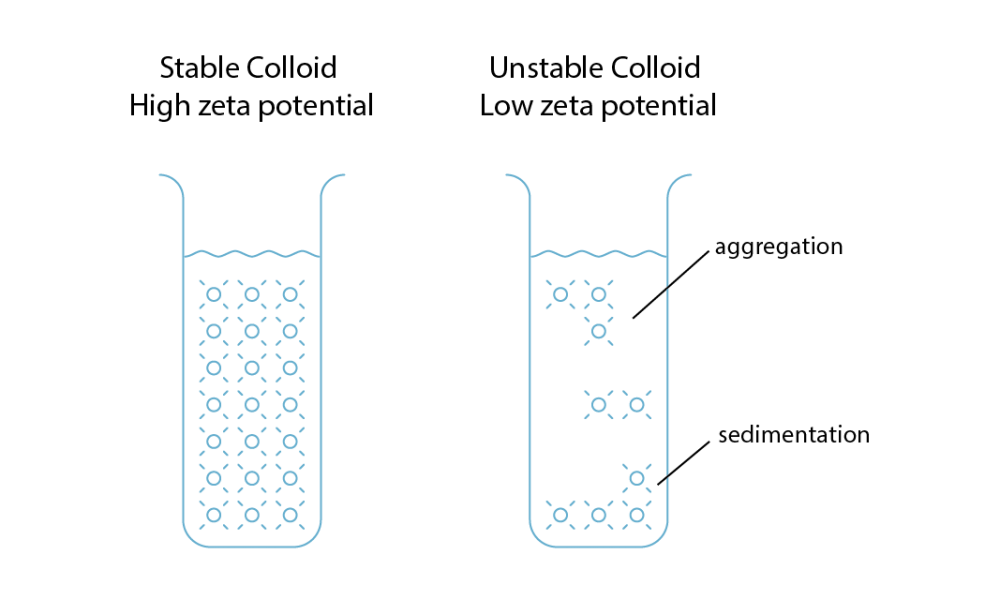
An electrical double layer is a structure of two parallel layers of opposite charges that appear on a surface of an object when it is exposed to a fluid.
Often a solid surface will carry a negative charge and attract a second layer of positive ions to the surface charge.
Nanobubbles in aqueous solutions carry a strong negative charge and are attracted to the electrical double layer and replaces the liquid-solid interfaces with gas-solid interfaces. This in turn increases the effective slip length and reduces the frictional drag of liquids and improves lubricity.
